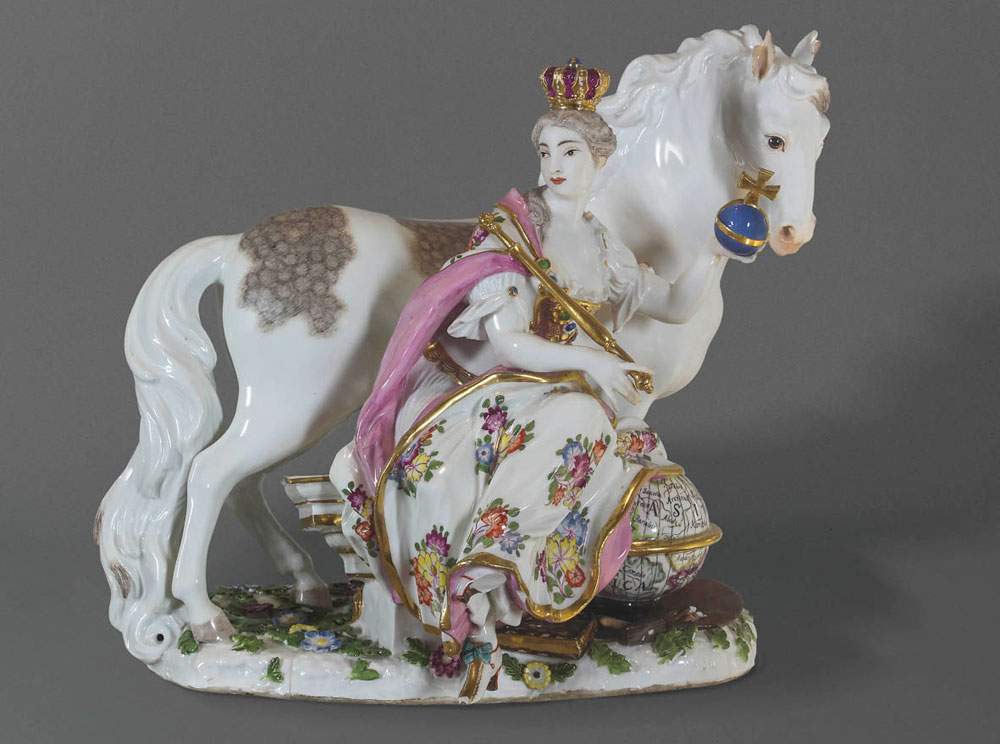For the first time since the 1800s, the Reggia di Colorno will bring together the porcelain of the Dukes of Parma
The Reggia di Colorno will host the exhibition Le porcellane dei Duchi di Parma, curated by Giovanni Godi and Antonella Balestrazzi, from March 13 to June 6, 2021.
On the occasion of the exhibition, the precious porcelains that were used by Louise Elizabeth of France and her consort Philip of Bourbon for ducal receptions, now available for state receptions of the Presidency of the Republic, exceptionally return to the Reggia. In addition to these now housed at the Quirinale, other precious porcelains from the Meissen, Sèvres, Vincennes, Chantilly, Doccia and Capodimonte manufactories from the Uffizi Galleries, the Museum of the Villa Medicea at Poggio a Caiano, and the Royal Museums of Turin, with documents granted by the State Archives, will make their return home.
From 1859, when the Duchy of Parma and Piacenza saw its end with its annexation to the Kingdom of Italy the following year, the art masterpieces of the Parma palace, belonging to one of Europe’s most refined and international courts, passed to the Savoy family. Most of the furnishings came to the Quirinale to decorate the palace of the Savoy family and then the seat of the Presidents of the Republic. The exhibition will thus bring together for the first time the heritage of Parma porcelain thanks to the archival work done by the curators and the group of experts.
The works on display, refined and of the highest quality, will highlight how taste at the court of the Dukes of Parma was shaped according to 18th-century French models. The Dukes had a real passion for porcelain: Louise Elizabeth, called “Babette” by her father Louis XV, King of France, was enchanted by the exotic charm of this compact, shiny and light material, capable of giving life to objects with refined lines that helped identify the social status of those who owned them. On her frequent trips to Versailles, Babette often purchased fine tableware at her father’s expense, both to display in her residenceand to give as gifts to her husband, who showed that he shared with her the pleasure of precious porcelain.
In this way the Duchy acquired the best of the production of all the most prestigious European manufactures, which the duchess personally sought out and commissioned, as evidenced by the numerous letters on display. Their residences featured fine tableware, coffee sets, statuettes, ice cream cups and curious objects, all in fine porcelain.
The exhibition will be set up on the main floor of the Palace, following a thematic division. Alongside the porcelain, portraits, letters and documents relating to the purchases of the duchess and Prime Minister François Guillaume Leon Du Tillot, drawings of furniture and furnishings designed by Ennemond Alexandre Petitot, books and engravings of feasts and weddings of the dukes of Parma, as well as the cookbooks in use in 18th-century kitchens will be on display.
The exhibition is made possible thanks to the collaboration between the Province of Parma, the Uffizi Galleries of Florence and Antea and is sponsored by the Province of Parma, the Municipality of Parma, the Municipality of Colorno and the Monumental Complex of the Pilotta, the State Archives and the Soprintendenza Archeologica belle arti e Paesaggi for Parma and Piacenza. The exhibits come from the Palazzo del Quirinale, Complesso Monumentale della Pilotta in Parma, Uffizi Galleries, Museum of the Villa Medicea in Poggio a Caiano, Royal Museums of Turin, Cariparma Foundation, Parma State Archives and private collectors.
For info: www.reggiadicolorno.it
Pictured, Bottega Meissen, Allegory of Europe (porcelain; 25.5 cm)
 |
| For the first time since the 1800s, the Reggia di Colorno will bring together the porcelain of the Dukes of Parma |
Warning: the translation into English of the original Italian article was created using automatic tools. We undertake to review all articles, but we do not guarantee the total absence of inaccuracies in the translation due to the program. You can find the original by clicking on the ITA button. If you find any mistake,please contact us.




























